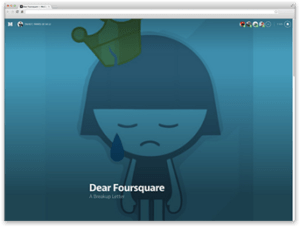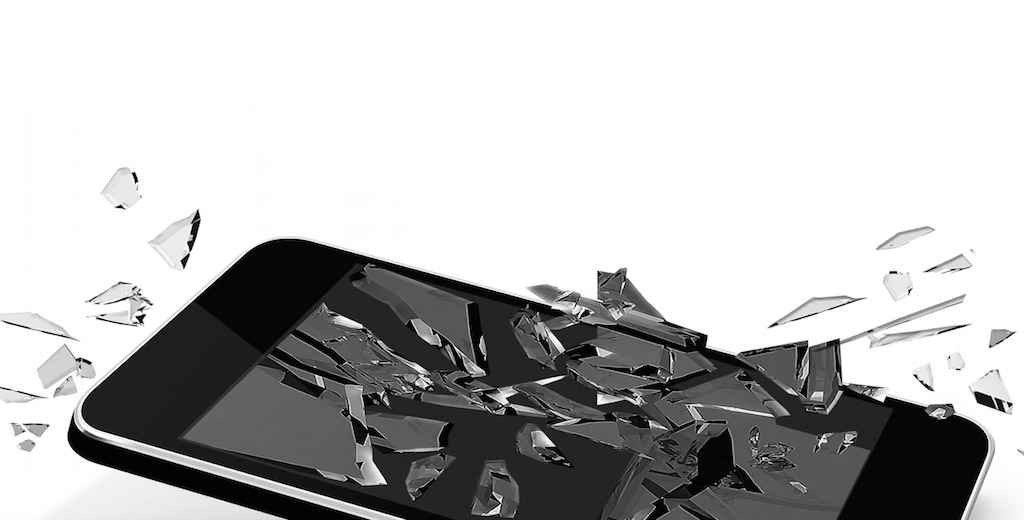Emotion is the fuel of brands, and as the business-minded marketing professionals begin their eye rolling and head for the exits, note that this is also not a new phenomenon. In studying 20,000 stories consumers told us about their relationship with brands, intimacy emerged as the most powerful pinnacle or a way to describe their ultimate bond. As with human relationships, brands and people form equally complex and emotionally driven bonds. Because how we feel about a brand is the single best predictor of behavior, we as marketers must rethink the strategies and methods we use to create and manage brands.
As we began to understand why people choose, love, or are loyal to brands, we became equally intrigued as to why and how they become frustrated, hateful, or enraged toward them. We’ve found this to be an area of little collective study—who wants to dwell on the negative, after all? It’s easy to be overwhelmed by the many published lists of “top” brands, yet finding any organized “worst of” study proves difficult. We believe learning from the lessons of brand failures is difficult, albeit critically important.
At the risk of dwelling on schadenfreude, brands today face increasingly new and severe risks. Today, companies looking to optimize and maximize their bottom-line performance are trying to do more with fewer resources. At the same time, consumers feel increasingly empowered through a wealth of choices and a realization of the impact they can leverage over brands. Venom, anger, and indifference, when fueled by the viral and compounding effects of the internet can make any brand executive feel like he or she is fighting a losing battle.
Beyond the risk to reputation and the performance of a brand, we have discovered that consumers can reach a more potent and permanent state of ambivalence. Think of it as worse than hatred and devoid of emotional connection of any kind, and worst of all, it is likely irreversible. We refer to counterweight or drag to building brands as a state of indifference.
We’ve collected a series of examples that illustrate how consumer bonds with brands are abused or, in some cases, destroyed.
CASE 1
COMCAST AND THE SOUND OF INDIFFERENCE

In this cringeworthy call, the customer is antagonized and tortured through a separation process that one must hear to believe. Amazingly, the caller remains calm throughout and holds his ground (likely because he knew it would make for better theater later). This story made a big splash in social channels and has prompted additional embarrassing findings for Comcast, such as the training manual that essentially prescribes the behavior on this call.
IMPACT/LESSON
Customers who feel trapped by the brands they use are prone to slipping into states of complete indifference. Utility brands or government brands tend to be typical culprits. Companies such as Comcast must find ways for their customers (especially if a significant subset of repeat customers feel trapped) to avoid feeling like prisoners. In fact, it’s worth stressing that where there is a potential for customers to feel trapped, extra caution should be taken.
RECOGNIZE WHEN A CUSTOMER IS A PRISONER TO YOUR BRAND.
CASE 2
UNITED BREAKS GUITARS

This piece of viral gold is now five years old! A United Airlines traveler was so upset that his guitar was broken on a flight, he created a song and a music video. Over 2.4 million people have viewed this compelling and humorous takedown of a brand that created indifference out of acting indifferent. This social media marketing classic is also a book and case study: http://www.unitedbreaksguitars.com.
IMPACT/LESSON
Many could relate to this poor consumer as airlines in the US have clearly been focusing on bigger issues than treating their customers right. One illustration on just how far we’ve come is evident from the delayed response of United Airlines. Taylor Guitars, by contrast, jumped at the opportunity to replace the guitar and become the hero and silver lining of the story. It’s hard to imagine a brand faced with something like this today and failing to act in a more savvy and expedient nature. In fairness to United, they did offer use of the video for training purposes (WHAT?!). http://en.wikipedia.org/wiki/United_Breaks_Guitars.
PERFORMANCE FAILURES CAN BECOME INFAMOUS AND EVERLASTING.
CASE 3
A GIFT GONE WRONG

When the most valuable brand in the world partners with arguably the biggest rock band in the world, what could go wrong? Following the automatic distribution of the new U2 album to every iTunes account holder, few could have predicted the resulting rebellion and angst. Fueled by twitter and a feeling of permissions exceeded, Apple responded by publishing a message and a method that reversed the “gift” to those who wished it to be removed.
In a related creepy example, an Xbox ad starring Breaking Bad’s Aaron Paul has Xbox owners surprised and annoyed. Because Paul actually uses Kinect commands during the ad, many Xbox One users have noticed that their Kinect can actually pick up his commands and act accordingly. When Paul says, “Xbox On” in the ad on TV, the Kinect will turn on the Xbox One, BBC reports.
xBox: https://www.yahoo.com/tech/aaron-pauls-voice-is-taking-control-of-xbox-consoles-88682616674.html
IMPACT/LESSON
Coincidentally, in the same week Apple CEO Tim Cook went out of his way to make clear Apple position of distance with respect to storing and leveraging user information (ApplePay and Healthkit services are looming), this blunder occurred. Despite seemingly good intentions, the desire of both these brands (Apple/U2) to make history for creating the largest album release exceeded their brands’ permissions. Although free, some users felt encroached upon (or violated) with material appearing on their personal devices that they neither requested nor preferred. Even free gifts sent to personal devices must be considered more carefully in the future—especially during a week when Apple unveiled its most “intimate” product: the Apple Watch.
DON’T ABUSE YOUR POWERS.
CASE 4
SOCIAL PLATFORM BREAKUPS

How do you break up with a social platform of friends and family, or the place with all your business connections or the tool that collects and rewards you for your favorite hangouts and social habits? Engineered to keep you following, linking, and liking these platforms continually tinker to make users’ session sticky and commercially viable. Sometimes those tweaks, married with general user fatigue, can go terribly wrong, and the impact can create a permanent indifference in a brand’s users.
One of the best articulations of indifference is evidenced in this article of a break-up letter to Foursquare. It starts with “Oh, Foursquare. We’re breaking up. It’s not me. It’s you…. and ends with “Sincerely, A Former Lover”. In between, you will see the emotional description of passionate brand intimacy moving towards complete indifference.
Another consumer in a similar state offered this gem in describing a painful Facebook breakup:
“I’m done with you, too. I hate the feeling I get when I’m comparing myself to my peers. Why is it so wrong to dislike using Facebook? Do I really have to post every thought, urge, feeling, and experience to you? Why is it necessary to share my experiences with you? I like that you help me stay connected to people, but at the same time, I feel like we (as a society) have lost the ability to appreciate good, old-fashioned face-to-face communication….”
IMPACT/LESSON
Owners and enablers of social communities, like those elected to run our real communities, have responsibilities and obligations to their constituents.
DON’T BE PERCEIVED AS AN OVERLORD; FACTOR IN STAKEHOLDERS AND ADVANCE WITH CARE AND CONSIDERATION.
In each case, it’s fascinating to see how technology is either the core issue or the enabler that amplifies and compounds the issue. Marketers today face a dynamic and evolving landscape, and they need better tools and methodologies to avoid brand indifference.
The Comcast caller defined the voice of indifference—a consumer who is lost to that brand forever. United showcased a flat-footed response to a passionate (and talented) consumer who used social media as the wind in his sails of his demands. Apple overstepped its permissions and realized it couldn’t just deposit unwanted gifts into very personal devices. Finally, Foursquare, Facebook, and many similar brands are finding that building tools and platforms to enable communities to prosper also requires careful creator’s considerations on how/when they redecorate or renovate. Although some consumers in these examples may not have reached indifference toward the brand, the possibility that they would is potentially higher now.
Truly understanding the bonds between brands and their consumers will require new considerations, new disciplines, and focused attention. Marketing success in the future lies in the pursuit of building intimacy between people, technology and brands. Like the bonds between people, these brand-consumer bonds require careful and continual attention. Technology creates a faster-moving, highly variable landscape that can both threaten or strengthen these bonds. And as powerful as the benefits of this intimacy can be, so too is the trauma that affects brands that have fallen victim to customer indifference.
The four examples above are vivid reminders of the stakes at play when brands fail.
To learn more about MBLM, click here.
